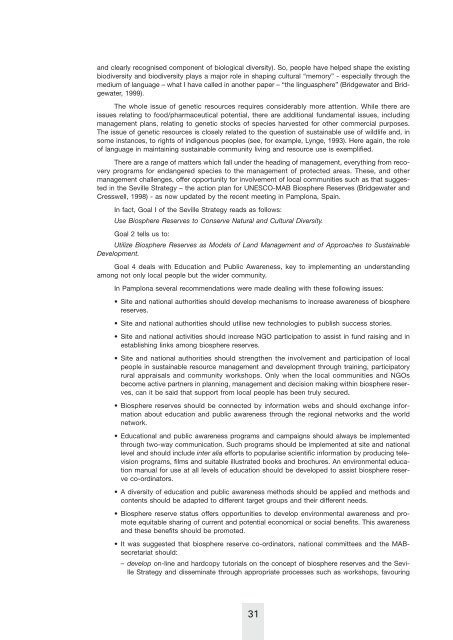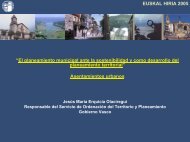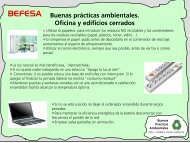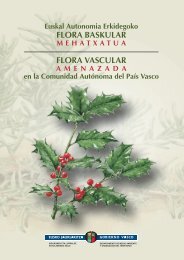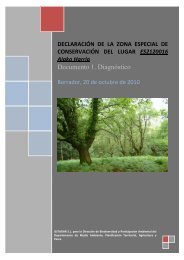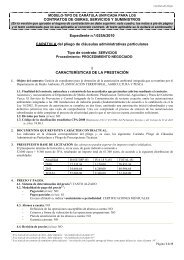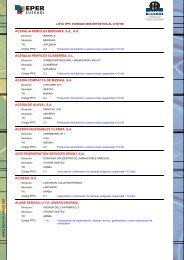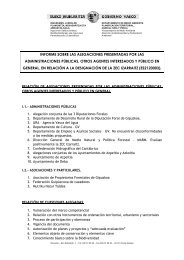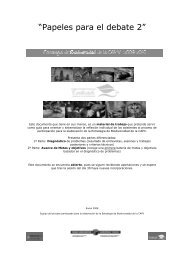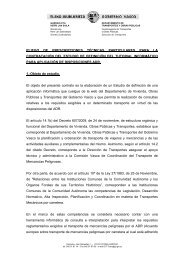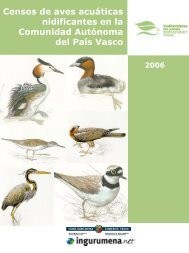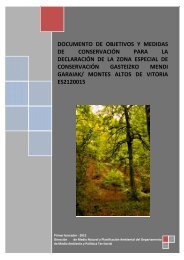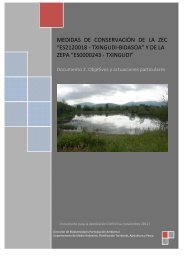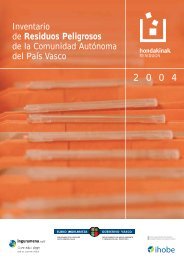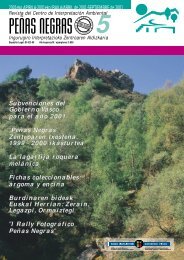Conservación, Uso y Gestión de los Sistemas Forestales
Conservación, Uso y Gestión de los Sistemas Forestales
Conservación, Uso y Gestión de los Sistemas Forestales
You also want an ePaper? Increase the reach of your titles
YUMPU automatically turns print PDFs into web optimized ePapers that Google loves.
and clearly recognised component of biological diversity). So, people have helped shape the existing<br />
biodiversity and biodiversity plays a major role in shaping cultural “memory” - especially through the<br />
medium of language – what I have called in another paper – “the linguasphere” (Bridgewater and Bridgewater,<br />
1999).<br />
The whole issue of genetic resources requires consi<strong>de</strong>rably more attention. While there are<br />
issues relating to food/pharmaceutical potential, there are additional fundamental issues, including<br />
management plans, relating to genetic stocks of species harvested for other commercial purposes.<br />
The issue of genetic resources is c<strong>los</strong>ely related to the question of sustainable use of wildlife and, in<br />
some instances, to rights of indigenous peoples (see, for example, Lynge, 1993). Here again, the role<br />
of language in maintaining sustainable community living and resource use is exemplified.<br />
There are a range of matters which fall un<strong>de</strong>r the heading of management, everything from recovery<br />
programs for endangered species to the management of protected areas. These, and other<br />
management challenges, offer opportunity for involvement of local communities such as that suggested<br />
in the Seville Strategy – the action plan for UNESCO-MAB Biosphere Reserves (Bridgewater and<br />
Cresswell, 1998) - as now updated by the recent meeting in Pamplona, Spain.<br />
In fact, Goal I of the Seville Strategy reads as follows:<br />
Use Biosphere Reserves to Conserve Natural and Cultural Diversity.<br />
Goal 2 tells us to:<br />
Utilize Biosphere Reserves as Mo<strong>de</strong>ls of Land Management and of Approaches to Sustainable<br />
Development.<br />
Goal 4 <strong>de</strong>als with Education and Public Awareness, key to implementing an un<strong>de</strong>rstanding<br />
among not only local people but the wi<strong>de</strong>r community.<br />
In Pamplona several recommendations were ma<strong>de</strong> <strong>de</strong>aling with these following issues:<br />
• Site and national authorities should <strong>de</strong>velop mechanisms to increase awareness of biosphere<br />
reserves.<br />
• Site and national authorities should utilise new technologies to publish success stories.<br />
• Site and national activities should increase NGO participation to assist in fund raising and in<br />
establishing links among biosphere reserves.<br />
• Site and national authorities should strengthen the involvement and participation of local<br />
people in sustainable resource management and <strong>de</strong>velopment through training, participatory<br />
rural appraisals and community workshops. Only when the local communities and NGOs<br />
become active partners in planning, management and <strong>de</strong>cision making within biosphere reserves,<br />
can it be said that support from local people has been truly secured.<br />
• Biosphere reserves should be connected by information webs and should exchange information<br />
about education and public awareness through the regional networks and the world<br />
network.<br />
• Educational and public awareness programs and campaigns should always be implemented<br />
through two-way communication. Such programs should be implemented at site and national<br />
level and should inclu<strong>de</strong> inter alia efforts to popularise scientific information by producing television<br />
programs, films and suitable illustrated books and brochures. An environmental education<br />
manual for use at all levels of education should be <strong>de</strong>veloped to assist biosphere reserve<br />
co-ordinators.<br />
• A diversity of education and public awareness methods should be applied and methods and<br />
contents should be adapted to different target groups and their different needs.<br />
• Biosphere reserve status offers opportunities to <strong>de</strong>velop environmental awareness and promote<br />
equitable sharing of current and potential economical or social benefits. This awareness<br />
and these benefits should be promoted.<br />
• It was suggested that biosphere reserve co-ordinators, national committees and the MABsecretariat<br />
should:<br />
– <strong>de</strong>velop on-line and hardcopy tutorials on the concept of biosphere reserves and the Seville<br />
Strategy and disseminate through appropriate processes such as workshops, favouring<br />
31


